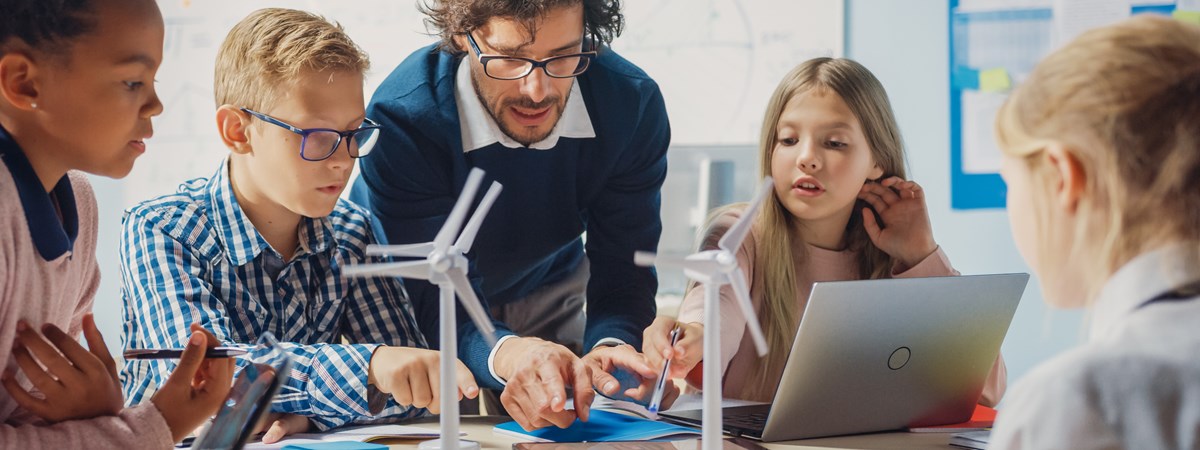Michelle Blanchet analyses the importance of sustainability within international schools and how to get community buy-in leading to meaningful impact.
There’s been a lot of talk around sustainability in education, but it’s often unclear what that looks like in action. We know we want to immerse our students in practices that will empower them to take steps forward for people, planet, and prosperity, but it’s not always obvious how we might go about actually doing that. Without clear guidance or a collective effort within schools, teachers might feel they have been left to their own devices. The result - a missed opportunity to engage students and staff in one of the most important subjects of our time and a chance to make a meaningful impact.
In many schools, individual teachers are doing what they can to engage students in sustainability. Blueprints like the Sustainable Development Goals (SDGs) have been helpful as they clearly define how we might create a better world and build a more sustainable future. The goals offer ample opportunities to make content more meaningful and relevant while empowering students to build skills and explore how they might solve these challenges.
We want to immerse our students in practices that will empower them to take steps forward.
But there are pitfalls. For one, sustainability is an expansive topic - one that quickly overwhelms. There are so many directions to go, it’s easy to feel lost. Second, without a collective effort, it can be hard to make a lasting impact. Projects, lessons, or initiatives might act as one-offs that, though valuable, do not go deep enough to instill the mindset we seek in our students. Finally, both staff and students might find themselves at very different starting points in regards to sustainability. They need differentiated support for any stage of their journey.
For all these reasons, it’s become increasingly clear of the power, responsibility, and opportunities that schools have to support sustainability education. There are many concrete efforts that leaders can take to both engage and support their staff so that sustainability doesn’t become another talking point. By setting the tone, establishing some direction, and providing guidance we can begin to provide the infrastructure needed to help teachers to make the impact they seek. Taken from dialogues with various teachers, here were some of the most highlighted efforts leadership might take to support teachers in this important work.
Have a vision
Teachers want to understand the purpose of this work, how it adds value, what it looks like in practice, and where it might lead (expected outcomes). Setting clear goals for what you want to achieve as a school and engaging staff as to how you might reach this ‘north star’ prevents sustainability from feeling like ‘one more thing’. Use sustainability to build community, so that you might work together as a team to pivot in the face of change.
Show how
There are endless opportunities to integrate the SDGs. Educators often want to know what this might look like in action, especially when assessments or compliance do not quite jive well with this topic. It’s important to discuss opportunities to incorporate sustainability into learning and give teachers time to ‘play’ with how they might bring this into the classroom. One way to get started is to bring the narrative into teaching so that content becomes relevant and meaningful. Demonstrate what this looks like for teachers. Then, as they get comfortable, explore how they might go deeper (e.g. PBL opportunities, inquiry, gamification, service learning, or local connections).
Provide TIME for collaboration and problem-solving
Teachers need an opportunity to learn about the SDGs and figure out how they might best incorporate it into what they're doing. They're excited to do this work, but it can quickly become stressful if it feels as if there’s no time to do it. Provide in house opportunities throughout the year for teachers to develop their ideas and work with one another so they can be successful. Basically, schedule in the time and the supports that are needed for teachers to be effective.
Lead by example
It’s important to show that you trust staff as they engage in this work. This means saying yes to ideas, and leaving space for agility. It means recognizing hard work, asking what they need, and ensuring they have the appropriate tools and resources to make things happen. Sustainability isn’t just about ‘going green’, it’s also in how we treat one another. Your staff is looking at you for how you set that tone. They'll take your lead when working with students.
Sustainability education is not going anywhere. In fact, it’s urgently needed now.
These are, of course, just a few suggestions for how we might be more successful with sustainability education. Schools are at different points in this journey. It’s important that regardless of where you find yourself, you keep moving forward. Sustainability education is not going anywhere. In fact, it’s urgently needed now. As the latest IPCC reports states, we have just eight years left to really mitigate the impacts of climate change.
Education is one of the most powerful tools we have to empower students so that they can understand that their actions matter and that they have the power to do something. While often perceived negatively, this is an opportunity to equip students with the mindset and skills they’ll need to thrive as adults and pivot in the face of change. Problems can be turned into possibilities when we show young people how to unleash their own human ingenuity. Together we must show them how we might work together to solve one of the greatest challenges of our time. Let’s not waste this opportunity to act, and to demonstrate to our students that it’s our mindset and actions that enable us to each be part of the solution.
Resources
Highlighted Resources:
Organizations to engage in SDGs:
Organizations to support school transformation/innovation:

